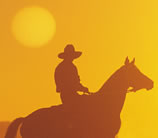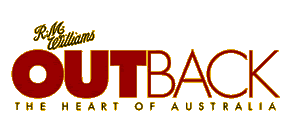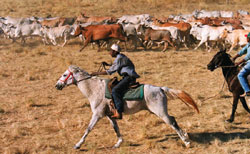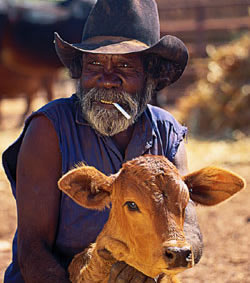



 Back in the saddle
Back in the saddleFor the first time since the equal pay ruling of the 1960s - which virtually wiped out the jobs of Aboriginal stockmen on properties in the north - there are serious moves to bring Aboriginals back into the pastoral industry.
Story John Dunn Photos John Dunn and Steve Strike
 In a small park alongside the Stuart Highway, in the tiny settlement of
Mataranka, 457 kilometres south of Darwin, Northern Territory, stands a sculpture
of an Aborigine on horseback, sitting easily in the saddle with a white shirt
tucked into his blue trousers and a wide-brimmed hat shading his head and
a bright red scarf loosely tied around his neck. This colourful and life-like
artwork, by Adelaide artist Yvonne Dorward, represents a national icon -
the Aboriginal stockman. It depicts a figure that was once not only a common
sight in the outback, but was also an integral part of the pastoral industry.
In a small park alongside the Stuart Highway, in the tiny settlement of
Mataranka, 457 kilometres south of Darwin, Northern Territory, stands a sculpture
of an Aborigine on horseback, sitting easily in the saddle with a white shirt
tucked into his blue trousers and a wide-brimmed hat shading his head and
a bright red scarf loosely tied around his neck. This colourful and life-like
artwork, by Adelaide artist Yvonne Dorward, represents a national icon -
the Aboriginal stockman. It depicts a figure that was once not only a common
sight in the outback, but was also an integral part of the pastoral industry.
Full story Issue 34 April/May 2004
Subscribe now and receive each bi-monthly issue for only $45 mailed to any address in Australia. Overseas rates at Subscription Centre. OUTBACK has been Australia's fastest-growing magazine for the past two years in a row.
Visit rmwilliams.com.au for R.M.Willams history, news and the on-line product catalogue